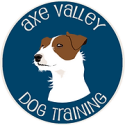
I’ve been working with a lovely whippet recently—sweet, sensitive, and… extremely opinionated about cats.
When her guardian first explained the issue, I assumed we were dealing with the usual barking or maybe the occasional lunge. But no. This whippet doesn’t just react—she screams. A high-pitched, full-body, heart-and-soul kind of scream. The kind that turns heads. The kind that makes you wish you were invisible.
So, we got to work.
Session One: Laying the Groundwork
Our first session took place at home, far away from any feline distractions. We focused on building some core skills—recall, calm behaviours, and a few new coping tools. Any time she spotted something mildly exciting (not a cat), we celebrated calm responses with generous rewards. These were the foundations she’d need when the cats inevitably appeared.
Session Two: Outside Practice
Feeling good, we moved outdoors for the next session. Armed with our new toolkit, we practised in the real world. She was brilliant—engaged, responsive, showing off everything we’d been working on.
But… no cats.
Honestly, I wasn’t mad about it.
Session Three: Enter the Cat
And then, it happened. A cat. A real one.
Cue the return of the scream. Cue lunging. Cue the sense that maybe we’d achieved nothing in the past two sessions.
At that moment, it was easy to feel like we’d failed. Like everything had unravelled the second a real challenge appeared. And I know that’s something many dog guardians can relate to—doing all the right things and still feeling like you’re back at square one when reality hits.
But Here’s the Thing
Those earlier sessions weren’t a waste of time. Not even close.
Without them, we’d be standing there with no tools, no skills, and a whippet in full meltdown mode. Instead, we had a dog who had the skills—we just needed to help her apply them in this new, harder context.
So we got creative.
The Cat That Wasn’t
We pulled out the remote-control car (yes, really). We strapped a toy cat to it.
Sure, the whippet wasn’t fooled for long. She knew it wasn’t really a cat. But it moved, it had shape, and from a distance, it was close enough to be useful.
Now, we could control the exposure.
We could adjust the distance.
We could set her up to succeed.
And suddenly, we had the perfect training scenario. The skills from sessions one and two started clicking into place. She could now see “a cat” and stay calm enough to practise.
We weren’t asking her to be perfect. Just to be a little better than before.
Progress Isn’t Always Pretty
No, she’s not yet walking past real cats without a peep.
But she can watch one from a distance without the scream. And that’s huge.
Because true progress with our dogs often doesn’t look like a straight line. It looks like wobbles and setbacks and small, surprising wins. It looks like pausing, reassessing, and yes—strapping toy animals to remote control cars.
So if you’ve ever felt like everything went out the window the moment real life walked in—you’re not alone.
Sometimes the magic happens in the mess.
Or the wobble.
Or the unexpected solution you hadn’t thought of before.
Over to You
Have you ever had a “this isn’t going to plan” moment with your dog that actually turned out OK in the end? I’d love to hear about it—drop your story in the comments below or share it with someone who needs a reminder that the messy moments matter, too.
If your dog’s got a bit of a feline fixation—or tends to come unglued at the mere sight of a cat—I can help. Whether it’s lunging, barking, or just being a little too enthusiastic about the local wildlife, you’re not alone.
🎩 My 1-1 training sessions are tailored, kind, and occasionally involve remote-control cars.
Click here to find out more and book – because peace with the neighbourhood cats is possible (and much quieter).
